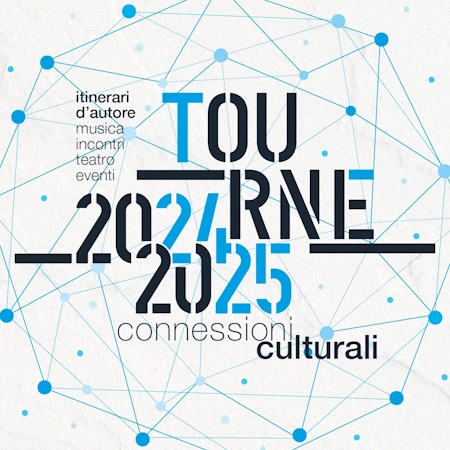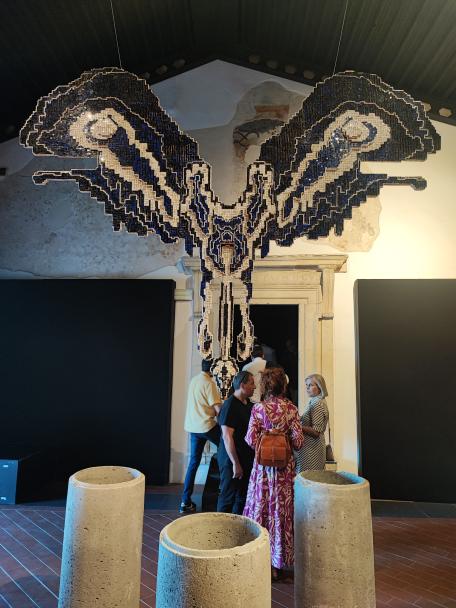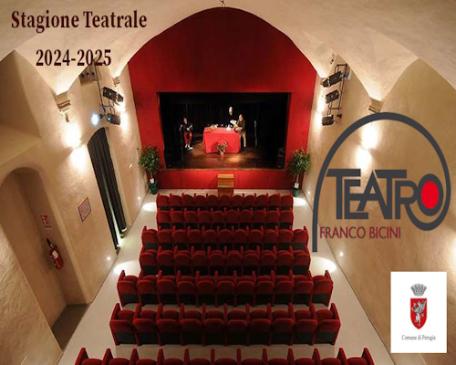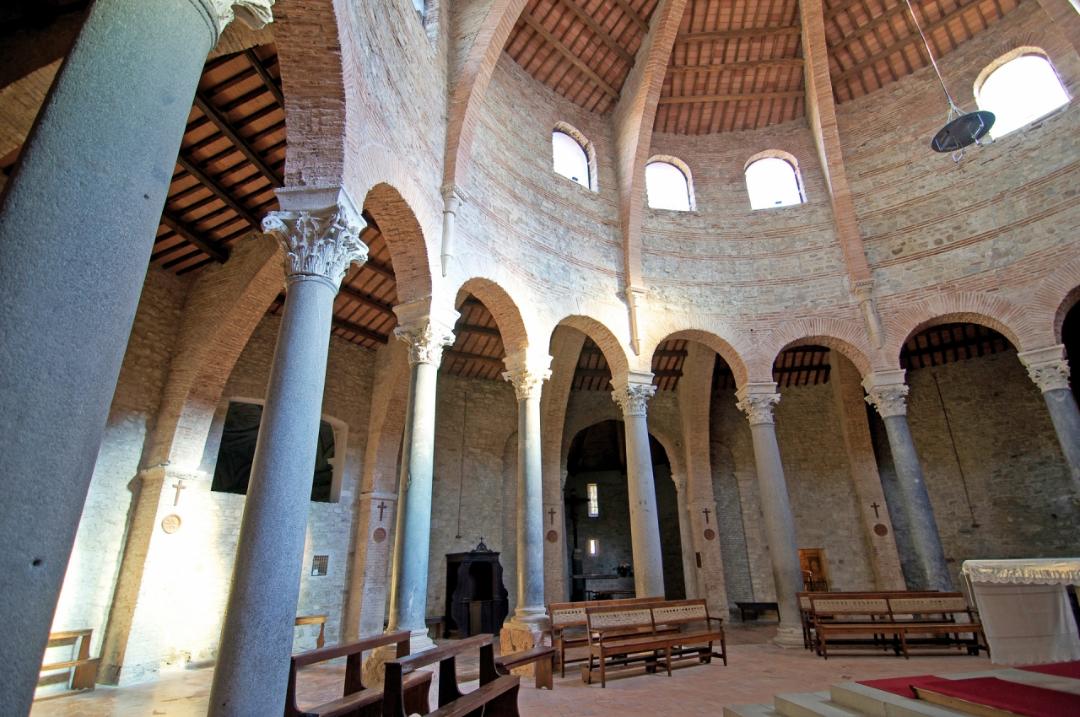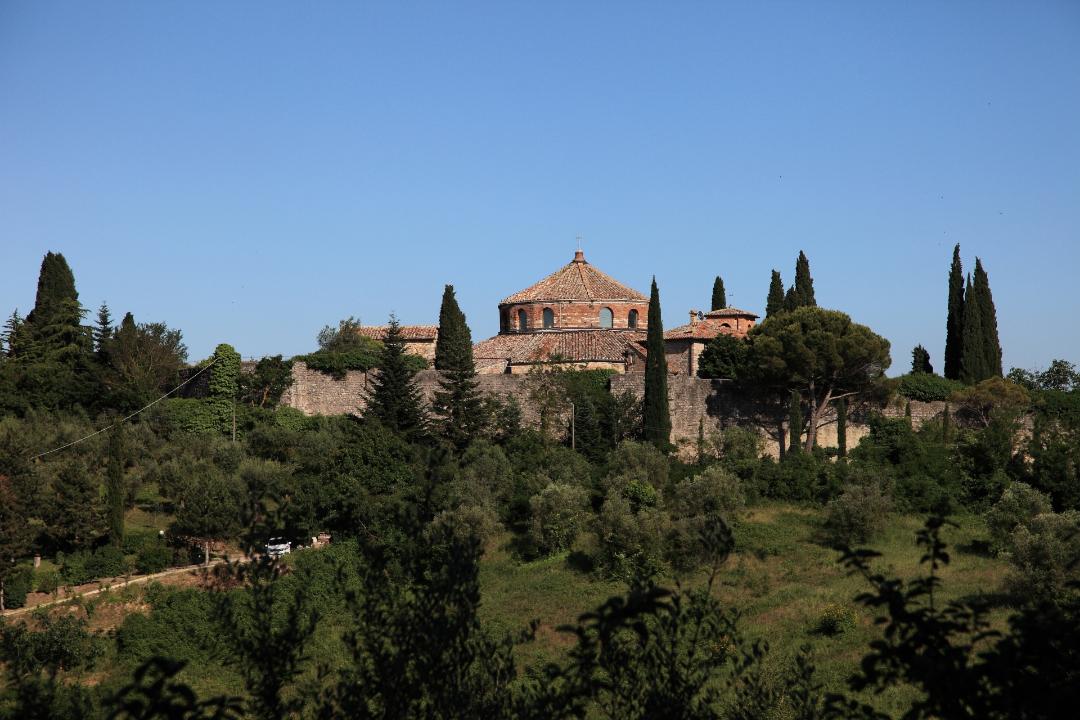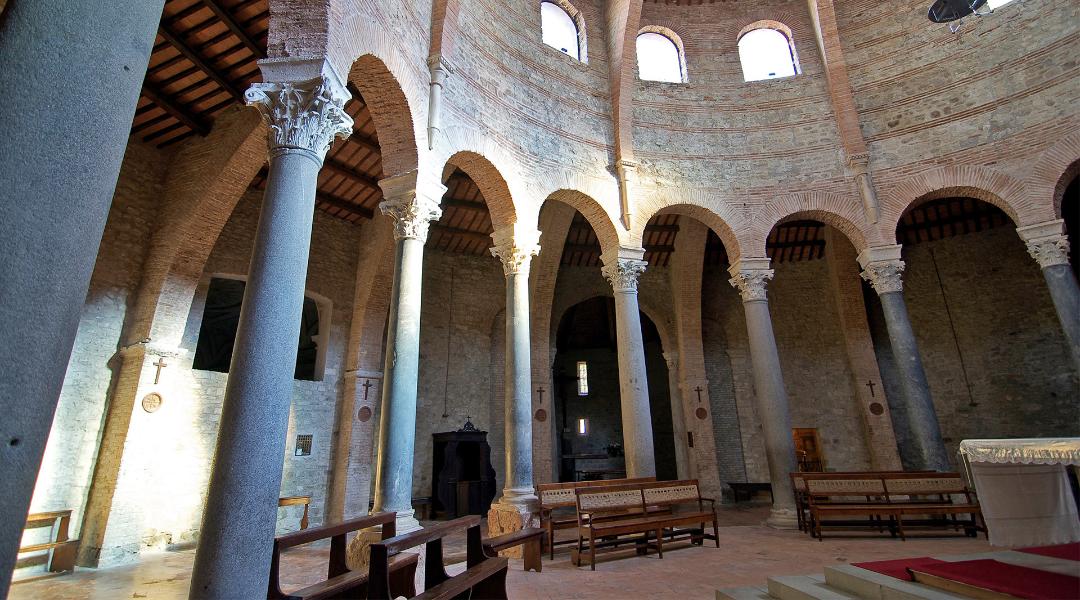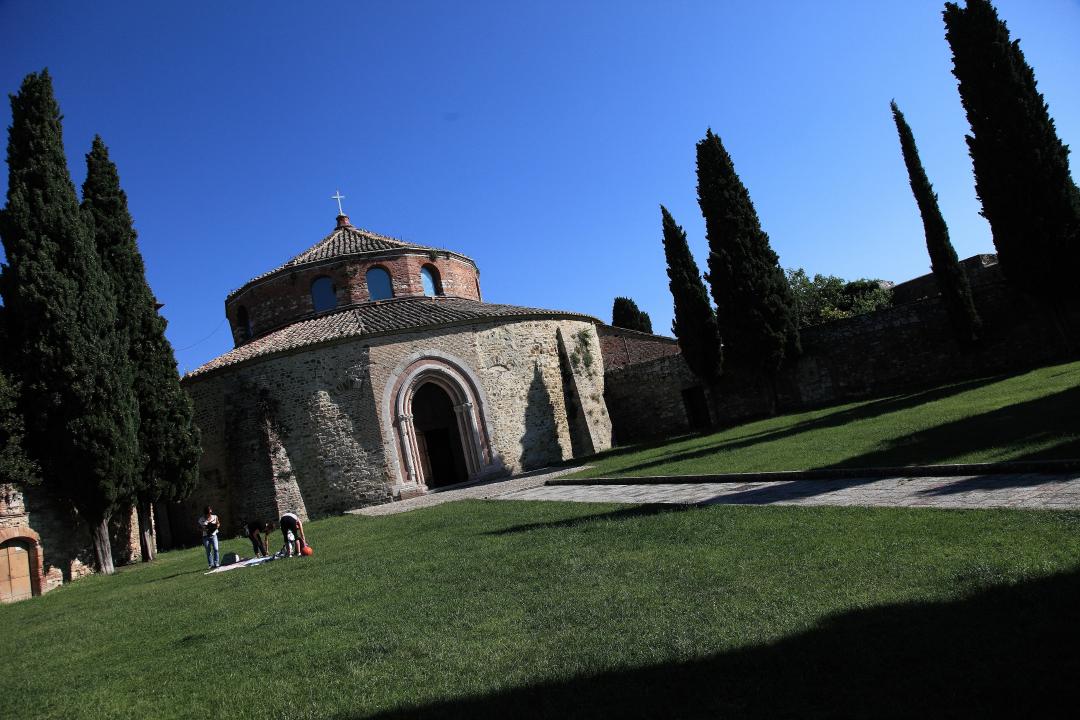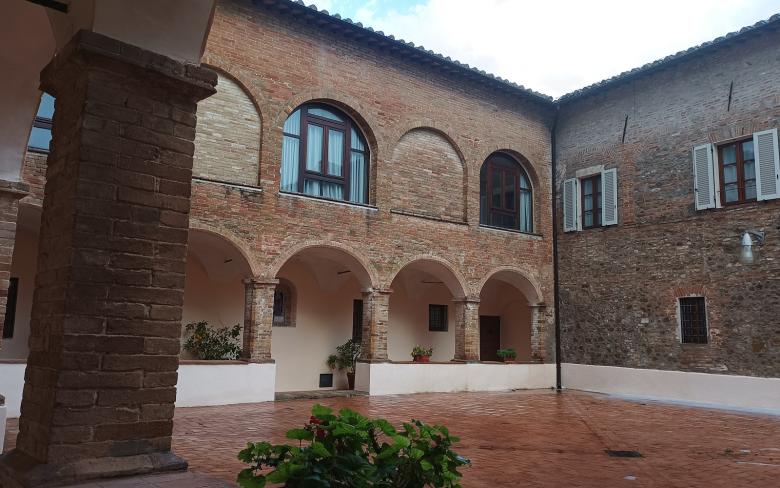Its current appearance, enclosed within the city wall, does not allow us to see the significance which the temple had for centuries. Placed on a hill, out of the city, it was the only building where one could practise one's Christian faith in a city which was still dominated by a Pagan culture.
Comparable to the Roman churches of Santa Costanza and Santo Stefano Rotondo, it has a circular plan.
Inside, the central area is separated from the ambulatory by sixteen differently sized salvaged Corinthian columns which hold up the drum. A series of windows, three by three, open up in the direction of the four cardinal points.
The broach roof is braced with ribs supported by corbels, which, like the door, are from the Gothic era.
Walking around the ambulatory, you can see the small baptistery with votive frescoes from the 15th century, the Crucifix chapel and the chapel of the Angel, whereas the fourth chapel was lost when opening the portal.
The altar, at the centre of the church, is composed of an ancient marble slab on a half column.
Interesting facts
Unlike what one may think, the building does not derive from the transformation of an ancient Pagan temple.
In reality, Christians never used temples of ancient worship because they were the direct expression of Pagan religions and also because their dimensions were too small to perform masses or welcome the believers inside.
In reality when the worship of numerous gods declined, temples erected to secondary gods were given by magistrates to the Christian community for any use they wished to make of them which was almost always to demolish them for use in the construction of a church elsewhere. For this reason the columns inside the building and other elements are borrowed and probably come from the Temple of Vulcan and from an existing temple dedicated to Flora on the Civitella d'Arna hillside.
Information and useful advice
The historical centre of Perugia is easy to get to by leaving your car in one of the car parks which surround the historical centre, i.e. Briglie di Braccio, Pellini, the car park on piazza Partigiani and that of Sant'Antonio. From here you can ether walk up corso Vannucci or use the APM service.
From Pellini car park and Piazza Partigiani car park, you can use the escalator whereas Briglie car park has a lift.
The MiniMetro people mover system of Perugia, implemented early 2008, makes travelling easier, improving connecting links between the centre and the suburbs.
Once you get to the centre, you can find the San Michele Arcangelo's church by walking along Corso Garibaldi or by leaving your car near the tower which hosts the Museo delle Porte e delle Mura urbiche, [the Museum of City Gates and Walls].



















